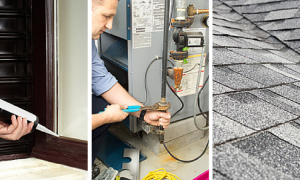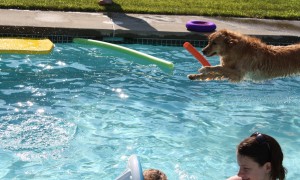By Allstate

When an agent takes you to a home and slides open the patio door to reveal a backyard swimming pool, you’ll likely have one of two reactions: you’ll either conjure up images involving lazy Saturdays and margaritas, or you’ll stiffen up with thoughts about the pool safety implications.
In either case, a swimming pool primer might be in order. Keep these safety tips in mind when you’re considering buying a home with a backyard pool.
Pool buying tip #1: Not all fences were created equal
Most pool accidents can be avoided with preventative measures. And while a perimeter fence is the first line of defense, many older homes have outdated installations that fail to keep curious children away. According to U.S. Consumer Product Safety Commission home pool barrier guidelines, a pool fence should be at least four-feet high with slats that are less than four inches apart. Also, be sure to check that the pool has a self-latching fence and that everything is also in compliance with local codes. Otherwise, you may have to factor in a substantial budget for building a new fence, renovating an existing one, or negotiating with the seller to cover the costs.
Pool buying tip #2: Check for cracked drain covers
Missing or cracked drains and suction covers pose a serious safety risk. Don’t believe a homeowner who insists that his drain cover “works just fine” even though it’s cracked. Older drains may not be in compliance with federal safety regulations and may cause accidental entrapment. If the pool’s drain is outdated or cracked, you will need to install a new drain that meets the Virginia Graeme Baker Pool & Spa Safety Act.
Pool buying tip #3: Cloudy water may indicate algae—or worse
Cloudy pool water is a sign that a pool’s chemistry is unbalanced. To pinpoint the problem, you’ll need to test the pool’s chlorine, bromine, pH, alkalinity, hardness and cyanuric acid levels. In some cases, backwashing or cleaning the filter is sufficient to correct the imbalance. But if the pH imbalance has resulted in black algae growing on the pool’s floor or siding, you’ll need to completely resurface the pool, which can cost anywhere from $5,000 to $10,000.
Pool buying tip #4: Beware leaky plumbing
Checking a pool for plumbing leaks can be difficult during a brief showing (you might want to think about hiring a home inspector familiar with swimming pools). However, if the owners routinely add more than two inches of water to their pool per week, this may indicate a plumbing leak. When you visit the pool, check for sunken, wet soil or eroding areas. The pool skimmer (which helps remove dirt and debris) is a common source of leaks but, typically, it can easily be fixed with pool putty. Plumbing leaks, however, can be expensive and time consuming to repair.
Swimming pools can be a valuable amenity in a new home. But giving a good eye to the safety before making an offer can ensure that the pool ends up being nothing more than a great source of future family fun.
Guest blogger Pauline Hammerbeck is a content editor for the Allstate blog, which helps people prepare for the unpredictability of life.







A pool can be great for families, but if homeowners aren’t careful, it can do them more harm than good. If there are small children in the family, you have to put the pool cover over it and keep the gate to the pool closed when it’s not in use.
Homebuyers should know these few things when
buying a house with a swimming pool. Although swimming pool offers a nice
bonding area for your family, it is much better to check those things written
above in order to have a worry free swimming pool.
To install a swimming pool, we had much to concern about, such as the Convenience, Thermal Efficiency, Safety, and most important Pool Enclosures Average Cost.